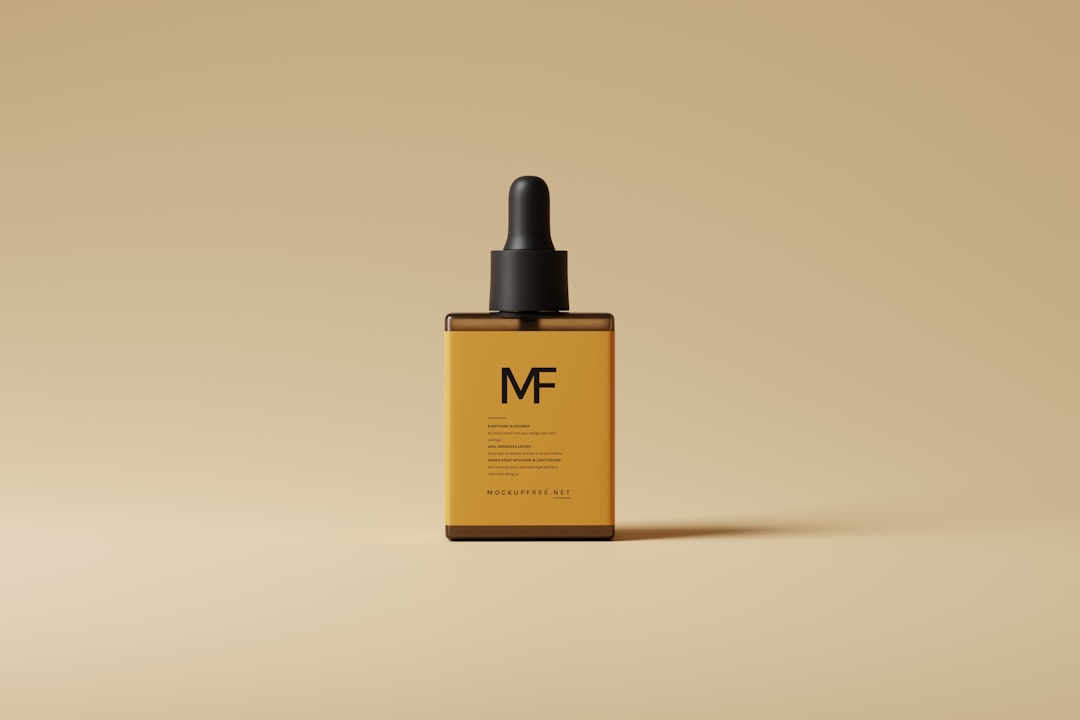In recent years, there has been a growing trend towards natural and homemade skincare products. Many people are becoming more conscious of the ingredients in their skincare products and are opting to create their own at home. One popular homemade skincare product is the serum, which can be tailored to individual skin needs and preferences. Serums are lightweight, fast-absorbing liquids that are designed to deliver a high concentration of active ingredients to the skin. They are often used to target specific skin concerns such as ageing, hydration, and brightening. Making your own serum at home allows you to have full control over the ingredients, ensuring that you are using only the best and most natural components for your skin.
Summary
- Homemade skincare allows you to control the ingredients and tailor products to your specific needs and preferences.
- Retinol is a form of vitamin A that helps with skin cell turnover, while hyaluronic acid is a powerful hydrating ingredient.
- Using a homemade serum can provide natural and cost-effective skincare benefits, such as anti-aging and hydration.
- Making your own retinol and hyaluronic acid serum at home is simple and requires only a few key ingredients.
- When using the homemade serum, start with a patch test, apply it to damp skin, and follow up with sunscreen during the day to protect your skin.
Understanding Retinol and Hyaluronic Acid
Two key ingredients commonly found in skincare serums are retinol and hyaluronic acid. Retinol, a form of vitamin A, is known for its anti-ageing properties. It helps to stimulate collagen production, reduce the appearance of fine lines and wrinkles, and improve skin texture and tone. Retinol is also effective in treating acne and reducing hyperpigmentation. On the other hand, hyaluronic acid is a powerful humectant that can hold up to 1000 times its weight in water. This makes it an excellent ingredient for hydrating the skin and maintaining its moisture levels. Hyaluronic acid also helps to plump and firm the skin, giving it a more youthful and radiant appearance. When used together, retinol and hyaluronic acid can work synergistically to provide anti-ageing benefits while keeping the skin hydrated and healthy.
Benefits of Using a Homemade Serum
There are several benefits to using a homemade serum, especially one that contains retinol and hyaluronic acid. Firstly, making your own serum allows you to customise the formula to suit your specific skin concerns and needs. You can choose the concentration of active ingredients, as well as add other beneficial components such as vitamins, antioxidants, and botanical extracts. This level of personalisation ensures that you are using a product that is tailored to your skin type and preferences. Additionally, homemade serums are often free from synthetic preservatives, fragrances, and other potentially harmful additives that are commonly found in commercial skincare products. This reduces the risk of irritation or allergic reactions, making homemade serums a gentler option for sensitive skin.
Furthermore, creating your own skincare products can be a more sustainable and cost-effective approach in the long run. By using high-quality, natural ingredients that are often readily available, you can reduce your environmental impact and minimise waste from excessive packaging. Homemade serums also allow you to save money in the long term, as you can make small batches at a time and avoid the mark-ups associated with commercial skincare brands. Overall, using a homemade serum gives you greater control over what you are putting on your skin, while also promoting a more sustainable and budget-friendly approach to skincare.
How to Make Your Own Retinol and Hyaluronic Acid Serum
Making your own retinol and hyaluronic acid serum at home is relatively simple and requires only a few key ingredients. To create a basic serum, you will need pure retinol powder or a retinol solution, hyaluronic acid powder or serum, distilled water or aloe vera juice, and a preservative such as vitamin E oil or grapefruit seed extract. To begin, mix the desired amount of retinol powder or solution with the distilled water or aloe vera juice in a clean glass container. Stir well until the retinol is fully dissolved into the liquid. Next, add the hyaluronic acid powder or serum to the mixture and continue stirring until it is fully incorporated.
Once the retinol and hyaluronic acid are well combined, add a few drops of your chosen preservative to the serum to prolong its shelf life. Vitamin E oil is an excellent natural preservative that also provides additional antioxidant benefits for the skin. Alternatively, grapefruit seed extract is a popular natural preservative that can help prevent bacterial growth in the serum. After adding the preservative, transfer the serum into a dark glass dropper bottle to protect it from light exposure. Store the serum in a cool, dark place and use it within a few weeks to ensure its potency. By following these simple steps, you can create your own effective retinol and hyaluronic acid serum at home, tailored to your specific skincare needs.
Tips for Using the Serum Effectively
Once you have made your homemade retinol and hyaluronic acid serum, it’s important to use it effectively to maximise its benefits for your skin. Firstly, start by incorporating the serum into your skincare routine gradually, especially if you are new to using retinol. Begin by applying the serum every other night to allow your skin to acclimate to the active ingredients. As your skin becomes more accustomed to the serum, you can increase the frequency of use to every night if desired. It’s also important to apply the serum to clean, dry skin before moisturising, as this allows for better absorption of the active ingredients.
When using a retinol serum, it’s crucial to apply sunscreen during the day as retinol can make the skin more sensitive to UV radiation. This helps to protect your skin from sun damage and minimises the risk of irritation or sunburn. Additionally, be mindful of using other potent skincare products such as exfoliants or acids while using a retinol serum, as this can potentially cause irritation or over-exfoliation. Lastly, be patient and consistent with your use of the serum, as it may take several weeks to see noticeable improvements in your skin. By following these tips and incorporating the serum into your skincare routine thoughtfully, you can effectively harness its anti-ageing and hydrating benefits for healthier-looking skin.
Precautions and Potential Side Effects
While homemade retinol and hyaluronic acid serums can offer numerous benefits for the skin, it’s important to be aware of potential precautions and side effects when using these active ingredients. Retinol can cause mild irritation such as redness, flaking, and dryness when first introduced to the skin. This is often referred to as the “retinization” period and typically subsides as the skin adjusts to the ingredient. However, if irritation persists or becomes severe, it’s advisable to reduce the frequency of use or discontinue use altogether.
It’s also important to note that retinol should be avoided during pregnancy or breastfeeding, as it has been associated with potential risks to foetal development. Additionally, individuals with sensitive skin or conditions such as eczema or rosacea may need to exercise caution when using retinol, as it can exacerbate these conditions. As for hyaluronic acid, it is generally well-tolerated by most skin types with minimal risk of side effects. However, individuals with known allergies to hyaluronic acid should avoid using products containing this ingredient.
Overall, it’s essential to patch-test any new skincare product or ingredient before full application to ensure that it does not cause adverse reactions. If you experience persistent or severe side effects from using a homemade serum, it’s advisable to consult a dermatologist for further guidance. By being mindful of potential precautions and side effects associated with retinol and hyaluronic acid, you can use these active ingredients safely and effectively in your homemade skincare routine.
Conclusion and Final Thoughts
In conclusion, creating your own retinol and hyaluronic acid serum at home can be a rewarding and beneficial endeavour for your skincare routine. By understanding the properties of these active ingredients and their potential benefits for the skin, you can tailor a serum that addresses your specific skincare concerns while avoiding potentially harmful additives found in commercial products. Homemade serums offer a more sustainable and cost-effective approach to skincare, allowing you to take control of what you put on your skin while promoting environmental consciousness.
When using a homemade serum containing retinol and hyaluronic acid, it’s important to follow best practices for application and be mindful of potential precautions and side effects associated with these active ingredients. By incorporating the serum into your skincare routine thoughtfully and consistently, you can harness its anti-ageing and hydrating benefits for healthier-looking skin. Ultimately, making your own skincare products empowers you to take charge of your beauty regimen while promoting a more natural and sustainable approach to self-care.
Discover how to create a spa-like experience at home with our latest article on BestSkincareProducts.eu. Learn how to transform your own space into a luxurious retreat and indulge in self-care without leaving the comfort of your home. In addition, explore the impact of stress on skin and how it affects the aging process. Find out more about the connection between stress and skin health, and discover effective ways to combat its effects. And if you’ve ever wondered whether spending more on skincare guarantees better results, our article delves into the price of beauty and whether splurging on skincare products is truly worth it. Create a spa-like experience at home and explore more insightful skincare topics on BestSkincareProducts.eu.
FAQs
What are the benefits of using a homemade retinol and hyaluronic acid serum for anti-aging?
Using a homemade retinol and hyaluronic acid serum can help reduce the appearance of fine lines and wrinkles, improve skin texture and tone, increase hydration, and promote a more youthful and radiant complexion.
What is retinol and how does it benefit the skin?
Retinol is a form of vitamin A that is known for its anti-aging properties. It helps to stimulate collagen production, increase cell turnover, and reduce the appearance of wrinkles, fine lines, and age spots.
What is hyaluronic acid and how does it benefit the skin?
Hyaluronic acid is a natural substance found in the skin that helps to maintain hydration and plumpness. When applied topically, it can help to hydrate the skin, reduce the appearance of fine lines and wrinkles, and improve skin elasticity.
How can I make a homemade retinol and hyaluronic acid serum?
To make a homemade retinol and hyaluronic acid serum, you can combine a few drops of retinol oil with a hyaluronic acid serum or gel. You can also add other beneficial ingredients such as vitamin C or essential oils for added benefits.
Are there any precautions to consider when using a homemade retinol and hyaluronic acid serum?
It is important to start with a lower concentration of retinol and gradually increase as tolerated to avoid irritation. Additionally, it is important to use sunscreen during the day when using retinol as it can increase sun sensitivity. If you have sensitive skin or any skin conditions, it is best to consult with a dermatologist before using retinol.




